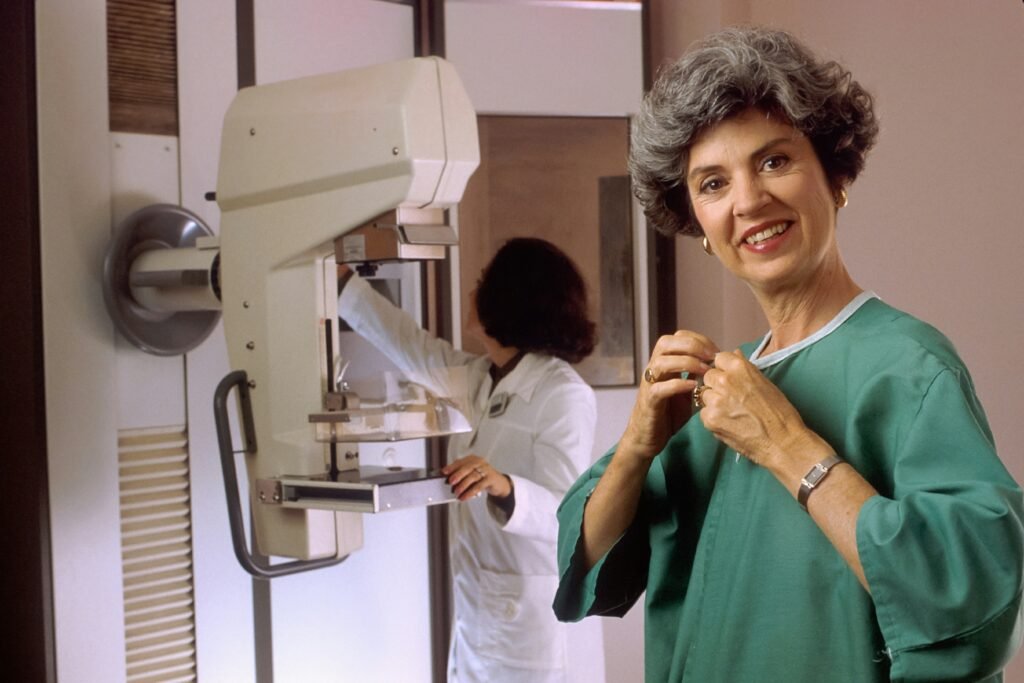Breast cancer is one of the most prevalent forms of cancer among women worldwide, with early detection playing a crucial role in successful treatment outcomes. Recognizing the signs and symptoms of breast cancer is essential for prompt medical evaluation and intervention. In this article, we’ll explore the most common signs of breast cancer that every woman should be aware of to prioritize their breast health and well-being.

- Lump or Mass in the Breast: One of the most common signs of breast cancer is the presence of a lump or mass in the breast tissue. This lump may feel firm or hard and is often painless, although some women may experience tenderness or discomfort. It’s important to note that not all breast lumps are cancerous, but any new or unusual lump should be promptly evaluated by a healthcare professional through clinical examination and imaging studies, such as mammography or ultrasound.
- Changes in Breast Size or Shape: Breast cancer can cause changes in the size, shape, or contour of the breast. This may manifest as asymmetry between the breasts or noticeable changes in the appearance of one breast compared to the other. Women may also observe dimpling, puckering, or indentation of the breast skin, which can indicate underlying abnormalities in the breast tissue.
- Skin Changes on the Breast or Nipple: Skin changes on the breast or nipple are important warning signs of breast cancer. These changes may include redness, swelling, or thickening of the breast skin, which may resemble the texture of an orange peel (referred to as peau d’orange). In addition, changes in the appearance or texture of the nipple, such as scaling, crusting, or inversion, should be promptly evaluated by a healthcare provider.
- Nipple Discharge: While nipple discharge can be a common occurrence, especially during pregnancy or breastfeeding, persistent or unusual nipple discharge may indicate an underlying breast health issue, including breast cancer. Nipple discharge associated with breast cancer may be bloody, clear, or milky in color and may occur spontaneously without manipulation of the breast or nipple.
- Breast Pain or Discomfort: Breast pain or discomfort is a common concern among women, but it is typically not associated with breast cancer. However, persistent or unexplained breast pain that does not resolve with rest or over-the-counter pain relievers may warrant further evaluation by a healthcare professional to rule out underlying breast conditions, including breast cancer.
- Changes in the Appearance of the Areola: Changes in the appearance of the areola, the pigmented area surrounding the nipple, may also be indicative of breast cancer. This may include changes in color, texture, or size of the areola, as well as the presence of scales or sores on the surface of the areola. Any new or unusual changes in the appearance of the areola should be promptly evaluated by a healthcare provider.
- Enlarged Lymph Nodes: Breast cancer can cause the lymph nodes in the underarm area (axilla) to become enlarged or swollen. These enlarged lymph nodes may feel tender or palpable upon physical examination. While enlarged lymph nodes can also be a sign of infection or inflammation, persistent enlargement of lymph nodes without an obvious cause should be evaluated by a healthcare professional.
One of the most well-known symptoms of breast cancer is a new lump or mass in the breast. According to a study published in the Journal of the American Medical Association, over 90% of breast cancers present with a palpable mass or lump (1). Researchers examined data from over 2,400 women diagnosed with breast cancer and found that the majority (90.4%) had a discrete mass or thickening in the breast tissue that was first detected by the patient or their healthcare provider (1).
The same study also found that other common physical signs of breast cancer included changes in breast size or shape (48.1% of cases), nipple retraction or inversion (29.9%), nipple discharge (17.2%), and skin changes like redness or pitting (15.7%) (1). These visual cues are important for both patients and clinicians to be aware of when performing regular breast self-exams and clinical breast exams.
Additionally, a review article in the American Family Physician journal noted that a concerning breast lump is often the first symptom that prompts a woman to seek medical attention for potential breast cancer (2). The authors state that primary care providers should thoroughly evaluate any new or changing breast lump, as early detection is crucial for improving outcomes in breast cancer (2).
It’s recommended to perform a self-exam once a month, a few days after your menstrual cycle ends, when your breasts are less likely to be tender or swollen. Consistency is key, as it will help you become more attuned to any changes in your breasts over time.
Remember, a self-exam is not a replacement for regular clinical breast exams and mammograms, which are important for the early detection of breast cancer. If you have any concerns or questions, be sure to discuss them with your healthcare provider.
Recognizing the signs and symptoms of breast cancer is crucial for early detection and prompt medical intervention. While the presence of these signs does not necessarily indicate breast cancer, any new or unusual changes in the breast or nipple should be promptly evaluated by a healthcare professional. Women are encouraged to perform regular breast self-examinations, undergo routine clinical breast examinations, and schedule mammograms as recommended by their healthcare provider to prioritize their breast health and well-being. Early detection remains the cornerstone of breast cancer treatment and offers the best chance for successful outcomes and long-term survival.